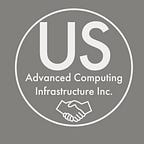Our Sunday night analysis of 4,529 US common stocks using our quantum algorithm…modest progress and improvement
Jeffrey Cohen, President US Advanced Computing Infrastructure, Inc. Chicago Quantum (SM)
Dec 7, 2020 1pm CT
A few updates to share on our run over this past weekend.
1. We include more shares in our analysis: (from ~3,250 to 4,529 US common shares on Dec 6, 2020). We analyze 4,529 stocks, perform data validation to remove missing or incomplete adjusted close prices, and extreme BETA(1-year vs. SPY ETF) values. We pass and analyze 4,163 US common stocks (up from 3,171 in our most recent publication). We made improvements and adjustments. We now include both NASDAQ Q and NASDAQ G stocks in our largest analyses. We FTP download and validate tickers better to enable ‘tricky tickers’ to be included. For example, we now include stocks with tickers that include ‘-’ or ‘.’ or ‘ ‘ when they are US common stocks. We now pull all tickers via FTP from both NASDAQ and NYSE.
One challenge with this many tickers is the availability of the data when we need it. We rely on a ‘free’ market data services API that is generally reliable, but we could not download multiple times while the market was open last Friday. Also, this market data feed is slow, and 4,500 stocks can take from minutes to an hour depending on system responsiveness and threading capabilities.
Another challenge is that each analysis we perform (e.g., solvers) takes longer. What used to take 60 seconds may take 180–360 seconds, so our flexibility is diminished. We are still learning how to tune our solvers so that every calculation is valuable (e.g., genetic algorithm mutation types and numbers of generations until we stop improving).
2. We automate the downloading and validation processes. We eliminated a source of human error (and time consumption). This process still takes a very long time depending on the hardware we use, and begins to show the speed advantage of our HP Z420 server (multi-core, 3.6GHz processor with 48GB ECC RAM) over our iMAC 2013 with 16GB non-ECC RAM).
3. By running two analyses in parallel (on the same data set which we now save and can share), we vary our CQNS_power setting across two parallel runs (same data, different systems). The changes in CQNS_power (from the default of 6.5 to a manual ‘guesstimate’ of 4.25) did not materially change our results. Therefore, we remove the CQNS_power adjustment parameterization from our roadmap.
4. Our simulated bifurcator is performing better in Phase 2 of our runs (e.g., once down to 64 stocks), and we find acceptable and interesting portfolios that share many of the same stocks as those with the lowest / best CQNS scores. We are learning how to narrow in to better solutions by adjusting Xi, eps and the number of iterations. We do not change the KERR constant, nor the Delta value (both ~ 1.0). We add interesting looping to allow us to test quickly many bifurcation settings on our datasets.
5. Formatting the output and key metrics from our run. We now incorporate ‘tabulate’ and ‘pretty’ tables. Looks great for Phase 2 outputs (where we have ~64 stocks), but can be unwieldy when we have 4,200 validated stocks). Lots of wrapped text.
6. Finally, we solved a delicate engineering issue. We see different results from our Server and iMAC runs and investigate the differences. In conclusion, the data was different, and even 30 minutes between downloads is enough to change the answers. So, we download once, and share data files. We also can see a difference between how deeply we can run our solvers between platforms. Our iMAC is quick, but cannot go as deeply as our server. I would expect using more powerful servers would provide more financial advantage. This did impact our results from Sunday night (e.g., a few stocks did change between the platforms).
7. We must have improved the way we loaded the data and set the parameters on the D-Wave Advantage 1.1 system. Our results were better than ever before on the new system. For typical QUBO runs, a chain strength of 1.0 and an annealing time of 100 micro-seconds is sufficient to gain usable, valid portfolios. On the D-Wave, an 11 stock portfolio was initially the best solution before we significantly increased chain strength for a specialized run. That run did provide a deeper CQNS score, although not good enough to rival the classical systems on the server.
As always, thank you for following our research and progress.
Note: We are long the stocks recommended by our CQNS quantum algorithm. We are not investment advisors, we do not provide investment advice, and this is not investment advice. We are working deeply with quantum annealing computers on our first use case, US common stock portfolio optimization, to see if we can find financial advantage, and quantum advantage, for our consulting clients.
For more information on methods & tools, visit my ResearchGate here.
Jeffrey Cohen
President, US Advanced Computing Infrastructure, Inc.
+1.847.780.4401 (office)
jeffrey@quantum-usaci.com (email)
PO BOX 1292, Highland Park, IL 60035–1292 (PO Box)
Chicago Quantum(SM) is a registered service-mark of US Advanced Computing Infrastructure, Inc., an Illinois corporation.
